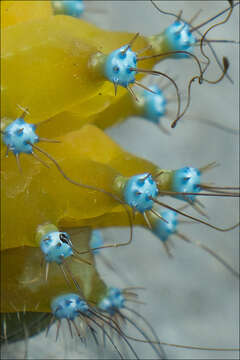Saturnia-pyri_7

Description:
Saturnia pyri Denis & SchiffermllerOrder: LepidopteraFamily: SaturniidaeEN: giant peacock moth, great peacock moth, giant emperor moth; DE: Wiener NachtpfauenaugeSlo.: veliki noni pavlinek, veliki pavlinecDat.: Aug. 13. 2019Lat.: 46.36064 Long.: 13.70479Code: Bot_1244/2019_DSC00463Habitat: Overgrown former pasture, Corylus avellana, Juglans regia, Fagus sylvatica dominant; slightly inclined mountain slope, southeast aspect; calcareous, colluvial ground, half shade, average precipitations ~ 3.000 mm/year, average temperature 7-9 deg C, elevation 575 m (1.890 feet), alpine phytogeographical region. Place: Lower Trenta valley between villages Soa and Trenta, right bank of river Soa, near abandoned farm house Skokar, Trenta 2, East Julian Alps, Posoje, Slovenia EC. Comment: The butterfly Saturnia pyri is attractive because it is among the largest in Slovenia (up to 13 cm across the wings), but it is mostly in brown and gray shades. No vivid colors are displayed as in so many other butterflies. They would be anyhow meaningless since this species is a night butterfly. However, with its caterpillar it is not so. Many caterpillars are beautifully colored, but probably no one reaches the Saturnia pyri. It is also among the largest one and can be up to 12 cm long and massive quite a 'beast'! The caterpillar changes its color during its growth; at the beginning it is almost black, then green, then yellowish and before the pupation orange tinted. Most bizarre are its thorny glands and hairs. It feeds mostly on leaves of fruit trees but also of Juglans regia, Fagus sylvatica and Corylus avellana and other broadleaved trees. It can be found most often in orchards, however, spraying pesticides means death. Unfortunately, also the high, old fruit trees around farmhouses are becoming rarer and rarer today. Hence it is already a rare and highly endangered species and protected in many countries including Slovenia. Enlisted in the Slovene Red List of rare and endangered species, marked by "V" representing a vulnerable species.Ref.:(1) Species found by Mr. Marko Sovre, Ljubljana.(2) Fauna Europas, Bestimmungslexikon, George Westermann Velag, Brounschweig (1997), translated to Slovenian, Mladinaka Knjiga, Ljubljana (1981), p 400.(3) www.pyrgus.de/Saturnia_pyri_en.html (accessed Feb.12. 2021)
Included On The Following Pages:
- Life (creatures)
- Cellular (cellular organisms)
- Eukaryota (eukaryotes)
- Opisthokonta (opisthokonts)
- Metazoa (Animal)
- Bilateria
- Protostomia (protostomes)
- Ecdysozoa (ecdysozoans)
- Arthropoda (arthropods)
- Pancrustacea
- Hexapoda (hexapods)
- Insecta (insects)
- Pterygota (winged insects)
- Neoptera (neopteran)
- Endopterygota (endopterygotes)
- Amphiesmenoptera
- Lepidoptera (moths and butterflies)
- Glossata (glossatan)
- Coelolepida
- Myoglossata
- Neolepidoptera
- Heteroneura
- Eulepidoptera
- Ditrysia
- Apoditrysia
- Obtectomera
- Macroheterocera
- Bombycoidea (Silkworm, Sphinx, and Royal Moths)
- Saturniidae (giant silkworm moths)
- Saturniinae (Silkmoths)
- Saturniini
- Saturnia
- Saturnia
- Saturnia pyri (gaint peacock moth)
This image is not featured in any collections.
Source Information
- license
- cc-by-nc-sa
- copyright
- Amadej Trnkoczy
- photographer
- Amadej Trnkoczy
- original
- original media file
- visit source
- partner site
- Flickr Group
- ID


